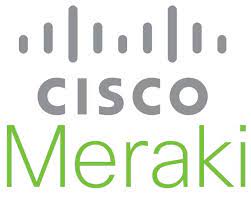 +
+

To integrate Meraki MS 120 with MetricFire, please sign up for a free 14 day trial. We want to fully understand your requirements and monitoring goals, so we can advise you on how to obtain better visibility into your infrastructure. Please book a demo with us so we can show you how quick and easy it is to get meaningful data into your MetricFire account, and use that data to build custom dashboards and alerts.
MetricFire is a cloud-based monitoring platform that offers a range of solutions for infrastructure monitoring, log management, and custom metrics. It integrates with various tools and services to provide a comprehensive view of the health and performance of your systems. One such tool is the Meraki MS 120, a cloud-managed switch from Cisco Meraki that provides reliable and secure networking for small to medium-sized businesses.
The MetricFire and Meraki MS 120 integration allow you to monitor the performance of your Meraki network switches and gain insights into their usage patterns. With this integration, you can collect metrics from your Meraki switches and analyze them in real-time to identify issues and optimize your network performance.
To set up the integration, you need to follow a few simple steps:
Create a MetricFire account if you haven't already. You can sign up for a free trial or a paid plan, depending on your needs.
Configure the Meraki integration: Once you have created your MetricFire account, you can configure the Meraki integration by navigating to the "Integrations" tab on the MetricFire dashboard and selecting "Meraki." You will need to provide your Meraki API key and the ID of the network you want to monitor.
Select the metrics to monitor: After you have configured the Meraki integration, you can select the metrics you want to monitor. MetricFire provides a range of metrics for Meraki MS 120, including CPU usage, memory usage, temperature, and more. You can select the metrics that are relevant to your needs and configure alerts to notify you when certain thresholds are exceeded.
Visualize and analyze the metrics: Once you have selected the metrics to monitor, you can visualize and analyze them using MetricFire's powerful dashboards and analytics tools. MetricFire provides a range of visualization options, including graphs, charts, and tables, and allows you to create custom dashboards to suit your needs.
Using MetricFire and Meraki MS 120 provides a comprehensive solution for monitoring and optimizing your network performance. With real-time monitoring and analytics, you can identify issues quickly and take proactive measures to ensure your network is running smoothly.
MetricFire is a full-scale platform that provides infrastructure, system, and application monitoring using a suite of open-source tools. We will aggregate and store your data as time series metrics, which can be used to build custom dashboards and alerts. MetricFire takes away the burden of self-hosting your own monitoring solution, allowing you more time and freedom to work on your most important tasks.
MetricFire offers a complete ecosystem of end-to-end infrastructure monitoring, comprised of open-source Graphite and Grafana. MetricFire handles the aggregation, storage, and backups of your data, and offers alerting, team features, and API's for easy management of your monitoring environment. You can send server metrics using one of our agents, custom metrics from within your application code, and integration metrics from a variety of popular 3rd party services that we integrate with like Heroku, AWS, Azure, GCP, and many more!
Our Hosted Graphite product has improved upon standard Graphite to add data dimensionality, optimized storage, and offers additional tools and features that provide customers with a robust and well-rounded monitoring solution.
By combining logs and metrics in MetricFire's Hosted Grafana, you can troubleshoot faster, spot... Continue Reading
ELKスタックを使用せず、最小限の労力で、軽量でオープンソースのセットアップを使用して、生のログを使用可能なメトリクスに変換する方法を紹介します。Loki、Python、Telegrafを使用して、ログをGraphiteメトリクスに変換し、簡単に監視やアラートを出すことができます。システム管理者、DevOps初心者、またはゼロからより革新的なモニタリングパイプラインを構築することに興味がある方に最適です。 Continue Reading